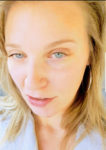 By Mia Maysack
By Mia Maysack
A loved one recently used the word “suffering” while expressing their thoughts on my situation. Yes, it does feel like agony at times, but I no longer embrace that word as a part of my personal terminology, therefore, I affirm that by making it known to others.
How can anyone know what our wants/needs are unless we convey them?
Furthermore, how do we go about conveying something we ourselves might not even know??
This next part sounds cliché, but: it all starts with us.
We know that our emotions/thoughts melt into one another and that both have equal capability to impact how we feel overall…
For this reason, it’s imperative for us to consistently reflect upon how we’re approaching our existence.
If we have it stuck in our minds that a particular treatment approach is not going to or won’t work, that there’s nothing we can do to improve our situation, or perhaps we succumb to the illusion that it’s hopeless—our bodies internalize this. So my question is: why contribute to anything other than what feels better?
Sometimes, we need our moments—I’m throwing a temper tantrum and I couldn’t care less what anyone else has to say about it!
Alright… Breathe. Take your space.
Then rise up, once again. We know this won’t be the last time that has to happen…
Another word I no longer identify with is that of “patient”. To me, that ended up feeling as though I were the smaller person in the room—looking up to others to tell me what’s best for myself. I guess I learned in the moments that I did desperately hang on to the words of professionals, yet was led astray or cut short, my answers were and had to be found within.
I’ve been quoted as saying: “The first few times someone introduced the concept of mindfulness to me, the only imagery I had was of punching them in the face”.
I’d attend these clinical support groups, where the surface of our chronic pain life was skimmed, but not dissected from a place of authentic understanding.
Don’t get me wrong—I’m grateful to have had this resource, there are definite advantages to PowerPoints based out of a textbook… but that’s not the whole story.
Regularly, I’d politely interrupt the instructors to provide them with different perspective.
It’s not that I disagreed with things the teachers would say, it is simply they’re only informed to an extent—because if ya don’t got it, you can’t get it.
This led me to the discipline in learning balance between what’s presented and how I may choose to take or internalize it.
At a follow-up appointment, I sat there to humor them, hooked up to a machine that demonstrated my heart rhythm, as if I hadn’t ever ran an entire floor of patients, on my own, in a past life as a nurse.
In that moment, the provider told me to “purposefully think of something upsetting,” so I remained on that frame of thought—the grief already coexisting within me gets reawakened each time the memories replay in my head of who I once was or dreamt I could be.
Of course, this clarity is only possible when my head isn’t hurting as badly as it can, but oh, MIND you, it’s always hurting!
The provider pointed out on the screen that my blood pressure had increased because there’s an emotional connection and response to everything within our bodies.
I was re-heartbroken because there’s just about nothin’ worse other than having to live like we do in the first place, but then leaving an appointment feeling even more wrecked then you did upon arrival leaves you low.
I was so over all of it, and thus took a hiatus from anything in relation to medical “care” for quite a while. I made the decision to incorporate my own background, along with a passion for healing, and began venturing the route of holistic health.
When I’ve proclaimed my approaches to energy healing, breath work, yoga practice, mindfulness, meditation as being more helpful than any traditional or mainstream attempt—there has been ridicule because it’s internalized, as if I’m suggesting it as a cure-all or quick fix.
The inner reflection, release of traumas, acceptance of challenges—all while managing very real pain as best I can with very little relief-—equates to the absolute most difficult job I’ve had or thing I have ever done.
Nonetheless, one of the most monumental moments throughout my pain journey has been the realization that I am not my pain—what I’ve experienced is entirely different than who I —there is a possibility to coexist with what I go through, as opposed to it defining or limiting me.

About Mia Maysack
Mia Maysack is a chronic pain warrior, U.S Pain Ambassador, Support Group Leader, and Volunteer Patient Advocate. Along with writing for Pain News Network, she is the Founder of Keepin’ Our Heads Up and Peace&Love Holistic Health/Wellness.
